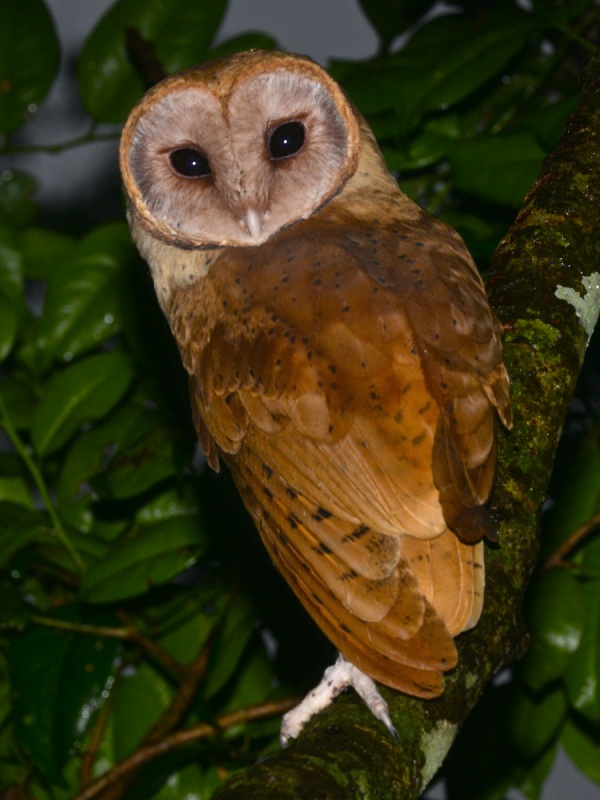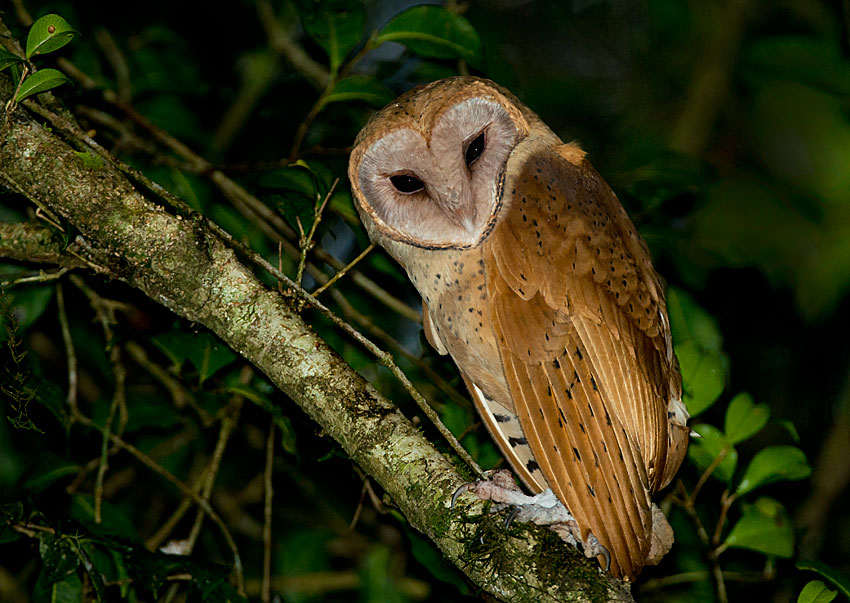Madagascan Owl
The Madagascar long-eared owl (Asio madagascariensis ), also called Madagascar Long-eared Owl, is a species in the family of authentics owls. It is found only in Madagascar.
Appearance
With a body size from 36 to 50 centimeters, it is the largest representative of its genus. Females are significantly larger than the males, maximum reach a body length of 40 centimeters.
Like all long-eared owls she has striking ear tufts. These are, however, further apart than is the case with other long-eared owls. The face veil is predominantly light brown. The area around the eyes is but blackish brown. It is dark brown on the body top with single red-brown to ocher -colored spots and stripes. The body bottom is light brown with distinct black longitudinal stripes and a few horizontal stripes. The eyes are yellowish to orange. The beak and toes are blackish.
In Madagascar, it is the largest species of owl and confuse for their showy spring ears and orange eyes barely. The short-eared owl is smaller, has brown eyes and is on the body bottom striated dense.
Distribution and habitat
The Madagascar long-eared owl is an endemic owl of Madagascar. They settled there evergreen rain forests, gallery forests, and also occurs in secondary forests. In addition, they are also found in drier deciduous forests. Your altitudinal distribution ranges from the lowlands up to altitudes from 1600 to 1800 meters above sea level.
Way of life
The Madagascar long-eared owl is a crepuscular and nocturnal owl. You will meet in the dense foliage of trees and lives otherwise mainly hidden in forests. Your food spectrum consists mainly of vertebrates, while mammals predominate. To prey includes small lemurs and bats. Small birds play a lesser role in their prey spectrum. The highly trained beak and powerful claws suggest that they propose tend to larger prey than other long-eared owls. She finds her prey mainly in forests and open areas that directly adjacent to the forest.
The reproductive biology is not yet sufficiently researched. All nests found were found in the abandoned nests of other large birds. Eggs are laid probably between August and October.









